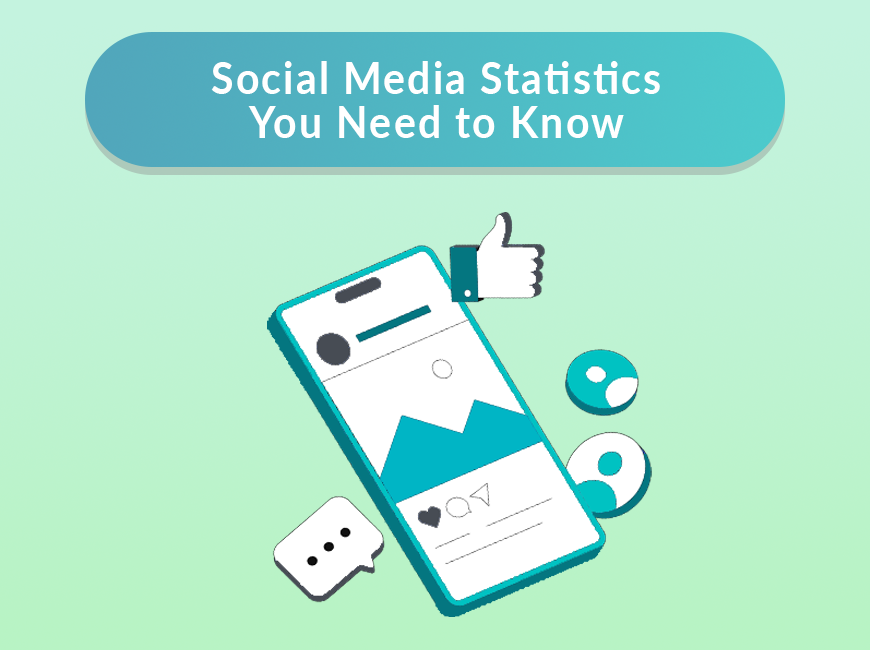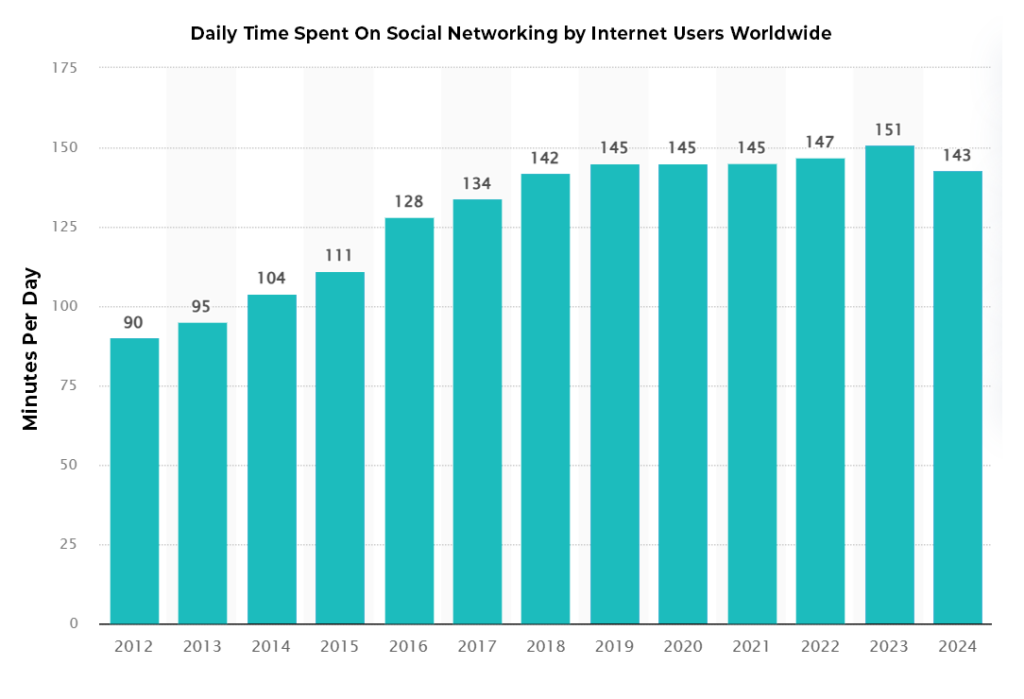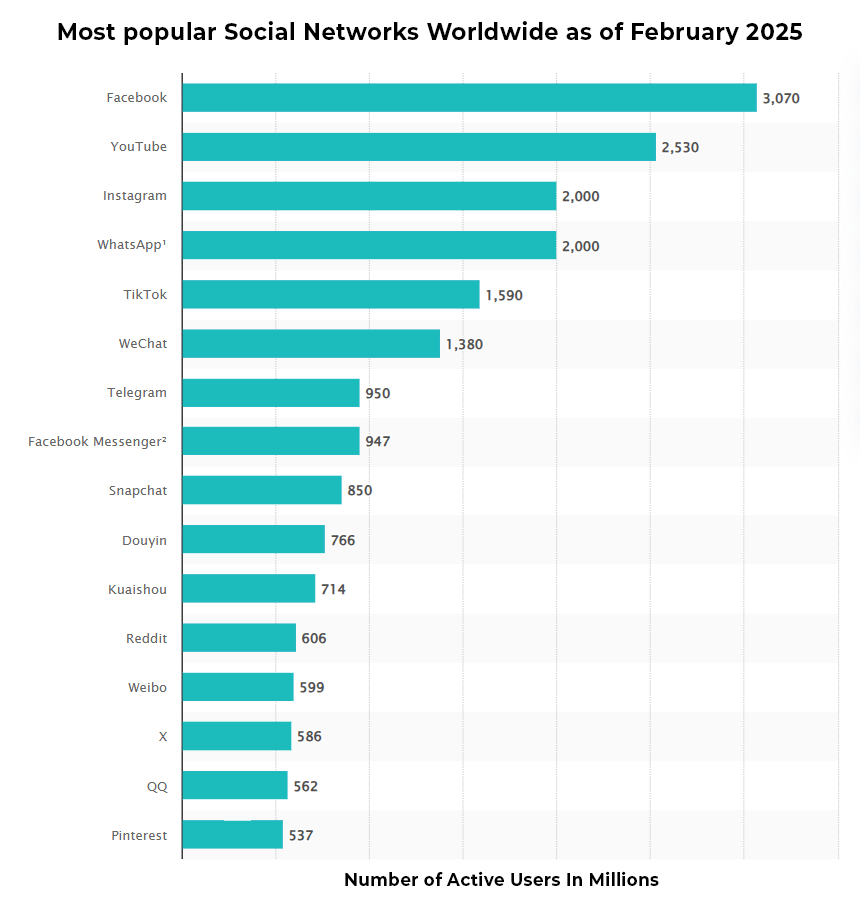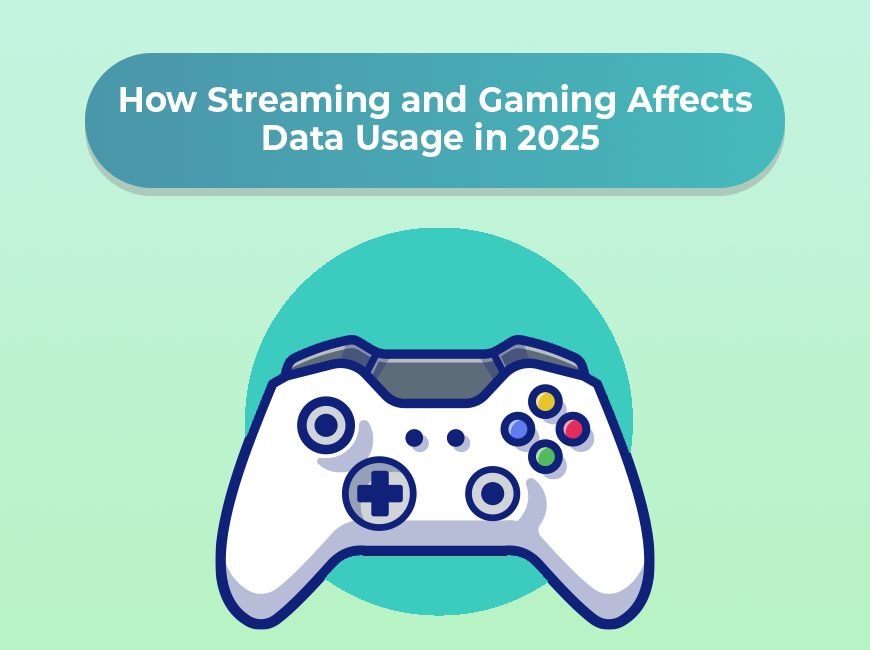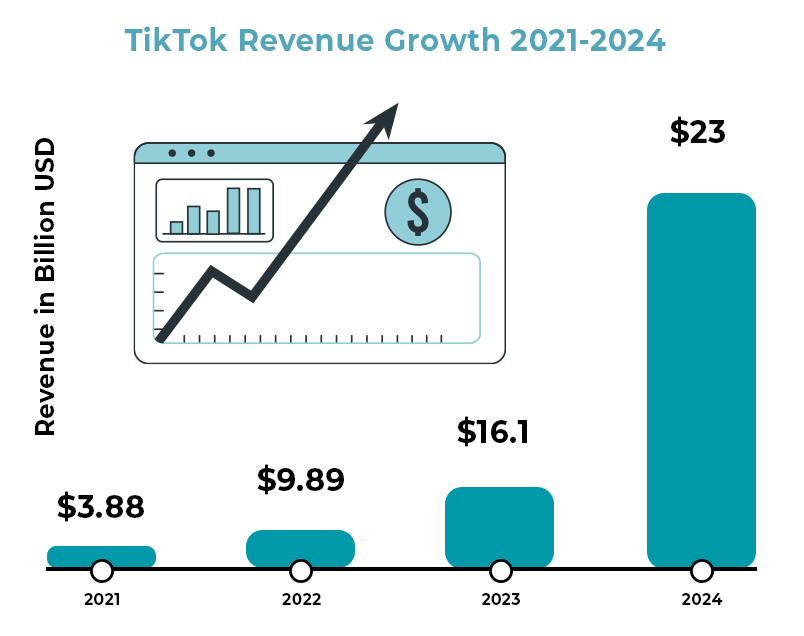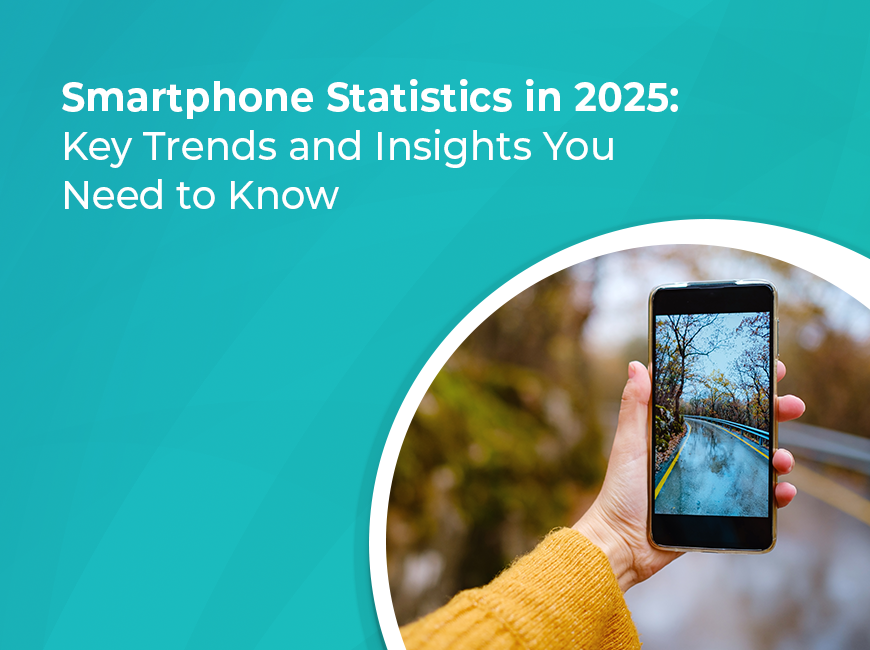Social media has taken over much of the internet and our lives, yet how much do we know about how it works? Just how popular is it? How is it changing over time to meet the needs of our social lives? There is so much to learn and to potentially find out, and yet so little time to do so for most people. We were interested ourselves and knew our readers would be as well, so we looked into the topic and found some key points and facets to talk about. As one would expect, social media is changing rapidly, and in important ways.
Data and careful study has provided us with most of the answers to the questions above, and an educated guess on the rest. Therefore, let’s start with those points. Here are 10 social media statistics that will give you an overview of the industry landscape in 2025:
1. There are 5.56 Billion Global Social Media Users
As of April 2025, there are 5.24 billion social media user identities across the world, and that has only grown. This totals about 63.9% of the world’s population. It is clearly a huge market, but it also shows some room for growth. There will be people who will never adopt social media for one reason or another (and for better or for worse), but there will always be such cases when it comes to technology.
What is interesting, though, is that the market so far is mostly saturated as far as internet users are concerned. From the same source, there are 5.56 billion internet users in one form or another. Realistically, internet users have more than one social media profile. Both the number of social media identities and internet users continues to climb as internet adoption becomes more common around the world.
A few things to note here are that the population of people aged 13 and under cannot be counted as users in most instances, as platforms restrict usage.
2. People Spend an Average of 2 Hours, 23 Minutes on Social Media Each Day
People use social media a lot more than they might admit. In fact, people spend nearly 143 minutes every single day on social media. That’s about 16.6 hours a week for a quick calculation.
Surprisingly, this is the first time in 12 years that time spent on social media has gone down and not up. While 2 hours and 23 minutes a day might sound like a lot, it’s down significantly from 2023’s highest recorded average of 2 hours and 31 minutes. Even though it’s just a few minutes difference, we haven’t seen social media average use times like this since before the COVID-19 pandemic. To put it in perceptive, social media users averaged 142 minutes a day in 2018 and 90 minutes in 2012.
Remember, these numbers are averages, meaning there are users spending a bit more than one day out of each week on social media. That’s a lot of time and a significant amount of attention going into these apps. Some users might check one account once a month for messages from family and not engage with the platform otherwise. Others use social media for work, or they’re trying to break through the competitive influencer market. Either way, time spent on social media is just one part of the equation; the other is how you’re using it.
3. The Average Person Uses 6.8 Different Social Media Platforms Each Month
How many social media apps do you regularly use? While you have your favorites, for sure, there is likely a good number of platforms where you have accounts but rarely, if ever, log in. Or there are platforms you might use without realizing it’s considered a social platform, like WhatsApp or YouTube.
The average person uses 6.8 platforms in total each month. Again, this brings us back to the number of social media identities around the world. If you have one social media account, you likely have more!
The top apps across the world are YouTube, WhatsApp, Facebook, Instagram, TiktTok, Messenger, Telegram, Snapchat, X, Pinterest, Discord, Threads, LinkedIn, Line and Reddit.
4. Facebook Is Still the Most Used Social Media Platform
Facebook might have been the first global social media platform. While Myspace was popular in the early 2000s, its usage was still limited to younger demographics. Facebook has only grown since its inception, at least in its size as a company and its influence over people. And if you’re counting the total number of users, it’s still on top with 3.07 billion monthly active users (MAUs).
And while Facebook is still on top, YouTube isn’t far behind with 2.53 billion MAUs. Instagram and WhatsApp are tied with about 2 billion MAUs each. TikTok has also secured the fifth spot for most popular social media app at 1.59 billion MAUs.
It may not be long before Facebook is dethroned as the most popular app. Its user base is growing older, and the only demographic that it is growing with is people over the age of 55. This isn’t ideal for Meta’s advertising hopes, and explains why they’re targeting younger demographics on Instagram.
5. In the United States, Overall Growth Is Stagnant
While social media is predicted to grow as more people get access to smartphones, the market is saturated in the United States. Everyone can get online, and everyone can get a smartphone, computer, and several social media accounts in the process.
If you look back over the last few years, there was a bit of growth in social media usage due to the pandemic, but previously, there was a dip. Thanks to a cultural shift, more users were becoming aware of the time they spent on social media, and people were disabling their accounts, sometimes deleting them. Many moved over to other social media outlets, while others chose to monitor their screentime.
6. There Are Huge Demographic Differences in Platform Usage
Like many services, websites, and media outlets, different demographic groups tend to have niche preferences in social media platforms. Some might be a bit more universal (such as Facebook and X), but others are far more skewed.
Women are far more likely to use Pinterest regularly, with only 30% of men using the platform regularly. Men are a bit more likely to use Reddit and LinkedIn. Interestingly, there are also large gaps depending on ethnicity and age as well, Older Americans are flocking overwhelmingly to Facebook and younger ones to TikTok, Instagram, and YouTube. For more data on the differences, we recommend you check out the full set of information from Pew Research.
7. Social Media Is Vital to B2B Interactions and Sales
Social media might be a sizable industry, but it is hard to understate its effects on every online business. A strong page on sites is needed to run a business, and networking is often done online as opposed to over the phone or in person these days.
And as one might expect, LinkedIn is king here, with B2B marketers saying that 80% of their social media leads come from the platform. About 46% of B2B marketers say Facebook is a key part of their plan.
8. 2025 Social Media Ad Spending
It might not come as a surprise to anyone that social media advertising worldwide is expected to reach $276.72 billion in 2025. Believe it or not, that number is expected to keep growing, with an annual growth rate of 9.38% that will bring ad spending to $433.28 billion by 2030. A large share of this year’s ad spending will come out of China at $96.82 billion.
It is also good to know that at this point the potential earnings from social media are even higher. While advertisements make up the lion’s share of the revenue for most social media outlets, other revenue streams such as premium subscriptions and additional products and services have been added.
The economic impact of social media is so much more than just advertising as well. Personalities and companies showcase themselves, their skills, and their products organically on platforms. It is an economic driver, allowing for more “word-of-mouth” advertising that people trust the most.
9. TikTok is Gaining Traction, Despite a Looming Ban
TikTok certainly has had an interesting story over the last few years. The short video app has taken the world (especially the young world) by storm and has launched an endless stream of memes and trends, for better and for worse. TikTok has been the torment of teachers, the endless entertainment of teens, and the birth of many a controversy.
Most recently, the app faces an outright ban in the United States. Although the ban has been delayed twice by President Donald Trump, the app’s owner ByteDance has been ordered by lawmakers to sell their American share to a U.S.-based company or face going offline permanently. Chatter surrounds several investors, including a potential purchase from Amazon, but no bid has officially been accepted. As it stands, the latest deadline for a deal is June 18, 2025.
Despite the potential shutdown, TikTok remains relatively popular among young Americans. Nearly 60% of users aged 18-29 report using the app. And there is still growth yet for the platform. Experts claim it’s one of the fastest growing platforms in the social media game, altering the course of media consumption to short-form video content.
10. And Snapchat Is on the Decline
For whatever reason, while TikTok is growing popular among the younger demographic, Snapchat is not doing so well. The platform saw a 39.6% penetration rate in the U.S. last year, a decline from 40% in 2021. While this isn’t so huge a jump, consider that most successful platforms see an increase, not a decrease. This resulted in a brutal 88% stock drop in September 2024.
Social media and major apps have fallen out of grace before (remember Tumblr?) and another bad step for Snapchat can relegate it to the history books or back pages of social media apps.
Why might this be the case? It could be that other apps are effectively doing the same thing now, with WhatsApp providing some degree of privacy and other apps providing the short, ephemeral content style. And if someone only needs to use one app for everything, they will probably do so. And Snapchat is rarely people’s main social platform.
Snapchat will likely be a mainstay of social media and communications apps for years to come, but its prominence as a relevant household name might not be so assured. It will need to reinvent itself to compete with the alternatives.
On the Future of Social Media
The one thing that we can say with absolute certainty is that social media changes faster than practically any other industry. To stay competitive, companies need to create apps that utilize the latest tech, update their algorithms regularly, and meet their infrastructure needs, often in growing international markets.
Sooner or later there will be another major social media giant to come onto the scene and shake things up. Maybe it’s out already and hasn’t hit critical mass yet. Much like how TikTok became popular quickly, something new will come in once there’s a gap. Facebook and Instagram aren’t going anywhere, but they may have company.
It’s also obvious to say that social media is going to cause more controversy down the line. There’s a problem or a scandal every other week, along with more ongoing stories and threads than anyone but a professional journalist could keep up with. Whether this will lead to government sanctions or regulation on a company or the industry in general remains to be seen. It may also lead to stricter internal policies regarding personal data usage and tracking.
Social media might become more local. As ads can become hyperlocalized and people are part of local communities, some social media networks might try to cater to those communities. Networks such as Nextdoor already exist, and it only stands to reason that we will find better ways to use them.
Social media may come, in one way or another, to more of our devices. As our cars, televisions, and other devices become connected, it only stands to reason that social networks will integrate themselves better into those products. People may choose to ignore such features as they have in the past, but some will be successful and will make up a larger part of our lives.
On the Future of Social Media
There is so much more to social media than what we see on our screens every day. Whether it is usage rates, revenue, or something else, there are statistics we can use to not only understand the present but have a better idea of where the industry is going. We hope that the above facts have helped give you a better idea of social media, and may you enjoy your digital circles with a better understanding moving forward.
